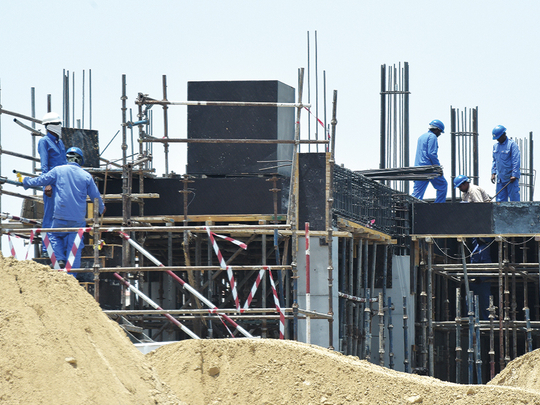
Dubai: The UAE economy, which faced a more than anticipated slowdown in economic growth in 2017, is expected to bounce back from this year thanks to the higher oil prices and the various fiscal reforms packages announced by the government, according to economists.
“The announced stimulus and structural reform measures comfort us in our view that UAE non-hydrocarbon economic activity is likely to turn the corner in 2019. We estimate Expo 2020 projects, the boost to corporate profits from the revised worker insurance scheme, the Abu Dhabi fiscal stimulus and ADNOC downstream expansion plans could add about one percentage point to the UAE real non-hydrocarbon real GDP growth next year,” said Jean-Michel Saliba, Mena economist at Bank of America Merrill Lynch (BofA Merrill Lynch).
Preliminary estimates by the Federal Competitiveness and Statistics Authority (FCSA) earlier this month showed the UAE’s real gross domestic product (GDP) grew 0.8 per cent in 2017. The International Monetary Fund’s (IMF) latest regional economic outlook has a revised estimate of 0.5 per cent GDP growth for 2017 while GDP growth is estimated at 2 per cent in 2018 and 3 per cent in 2019.
According to BofA Merrill Lynch analysis, real GDP growth breakdown by demand for 2017 suggests private consumption contracted by 1.3 per cent year on year, and gross fixed capital formation nearly came to a halt last year (0.6 per cent from 8.8 per cent in 2016) due to the drag from the hydrocarbon sector.
The real GDP breakdown by industry shows construction continued to contract by 1.6 per cent year on year on year, real estate expanded modestly by 2.8 per cent year on year but accommodation and food services grew by 8.5 per cent year on year.
“We expect overall UAE real GDP growth of 1.9 per cent in 2018, from 0.5 per cent in 2017. The headline figure masks a likely stabilisation in hydrocarbon real GDP following a contraction in the oil sector in 2017 due to the Opec deal. We see non-hydrocarbon real GDP growth picking up to 2.8 per cent in 2018, from 1.9 per cent in 2017. Over the medium term, we expect non-oil real GDP growth to increase to about 3.5 per cent on the back of Expo 2020 projects, structural reforms and fiscal stimulus,” said Saliba.
Growth drivers
Recently announced fiscal boost in terms of higher government spending, reduced government fees combined with incremental capital spend related to Expo 2020 will be the key drivers of revival non-oil economic growth in the country.
Analysts see the latest measures such as scrapping a mandatory deposit for private sector employees could free up liquidity for businesses. “We see the UAE’s recent policy announcements as a multi-pronged approach to support the economy over the short and medium-term,” said Bilal Khan, senior economist, Mena and Pakistan at Standard Chartered Global Research.
BofA Merrill Lynch estimates that the incremental government capital spending for the Dubai Expo could increase Dubai GDP growth by 0.5 percentage point in 2018-2019. While there are a number of uncertainties surrounding meeting tourism targets and spending forecasts, estimated Dubai Expo could raise Dubai’s GDP growth over the period of the fair in 2020-21 by 2 percentage points through higher job creation, consumption and tourism flows.
Abu Dhabi authorities recently approved a Dh50 billion three-year stimulus package. Analysts estimate the stimulus could add 0.4 percentage point annually to Abu Dhabi real non-hydrocarbon GDP. The annual stimulus fiscal cost of $4.5 billion (2 per cent of Abu Dhabi GDP) should be financeable in the context of high oil prices.
Adnoc also recently announced a five-year investment plan of Dh165 billion to expand downstream capacity alongside global partners, which, if realised through domestic rather than overseas investments, could add annually a further 1.1 percentage point to Abu Dhabi real non-hydrocarbon GDP growth.












